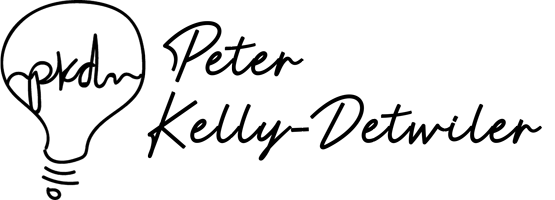EP 3: Tech Giants Team Up with Nucor: Advancing Clean Energy Innovations
Prepare to be electrified as we reveal how Oak Ridge National Laboratory is wirelessly supercharging the future of electric vehicles with an unprecedented power density breakthrough, and how California's school buses are driving into the future with vehicle-to-grid technology. These innovations aren't just about convenience; they're game changers that could send ripples through our energy infrastructure and economy. We're also unpacking Mondelez Deutschland's leap into geothermal exploration and TerraPower's vision for modular nuclear reactors. With sustainability as the star, we'll examine how these advancements could redefine industrial processes and power generation.
This week's journey through the energy landscape doesn't stop there. We're examining the collaborative might of Google, Microsoft, and Nucor as they forge the path for early-stage clean electricity technologies. Plus, we're showcasing the largest dynamic line rating project in the US, courtesy of Heimdall Power and Great River Energy. This partnership could unlock the true potential of our existing transmission capacity, heralding a new era of efficiency. So, strap in for an episode that promises a thrilling ride through the cutting-edge of energy innovation, where the stakes are high, and the opportunities are boundless.
Transcript
Speaker 1: 0:00
I've got your energy stories for this, the fourth week of March 2024. And in the first one, oak Ridge National Laboratory says it's achieved quote the world's highest power density for a wireless charging system. Unquote for a passenger EV sending 100 kilowatts of juice five inches through the air with its polyphase electromagnetic coupling coil via electromagnetic fields to a Hyundai Kona EV. Also in the EV space, the California Energy Commission, cec, has awarded $3 million to BorgWarner and project partners Fermata Energy and the Lion Electric Company to support an electric school bus fleet vehicle-to-grid V2G project. The aim is to yoke a fleet of school buses with AI-powered V2G technology and strengthen the grid during emergency events when buses are parked, while also generating revenues through participation in demand response programs and other value creation opportunities. Among other scenarios, v2g-enabled buses might be able to provide power during public safety power shutoff events when power lines are intentionally de-energized in the face of high wildfire risk. The grant will support installation of 21 BorgWarner 125 KW bidirectionally enabled chargers, joined with at least 20 Lion D electric school buses. Fermata Energy will optimize and manage the charging and discharging of the buses to maximize grid benefits and revenue through its Veh-to-everything vehicle-to-X platform.
Speaker 1: 1:29
Well advanced geothermal isn't just limited to startup companies like Evoor Vervo and Sage Energy. Mondelez Deutschland Snacks Production just got a permit from the State Office of Mining, energy and Geology of Lower Saxony Germany to explore locally for geothermal energy within a 100 square kilometer area. Mondele, like many companies, seeks to lower its carbon footprint and is thus exploring the potential of deep geothermal projects to supply carbon-free heat that can support various industrial processes besides power generation. The mining office has thus far issued 26 permits for the exploration of geothermal energy. Terrapower, the small-scale nuclear reactor development company backed by Bill Gates, plans to start construction on a sodium-cooled modular nuclear reactor in Wyoming as early as June. Terrapower will apply with US regulators this month for a construction permit to start building a demonstration plant near a retiring coal facility, irrespective of whether it has a nuclear regulatory commission permit by then. The company currently plans to commission a facility in 2030, and TerraPower is one of two companies that have received initial funding through Department of Energy's Advanced Reactor Demonstration Program to support the next generation of advanced US nuclear reactors.
Speaker 1: 2:47
Google, microsoft and Nucor, the steel company, are combining their demand for advanced clean electricity technologies, hoping to accelerate development of new business models that advance early commercial-stage projects such as advanced nuclear, next-generation geothermal, clean hydrogen and long-duration energy storage. The group intends to issue RFIs in various areas of the US, helping potential project developers that are seeking energy off-takers. While wind and solar can frequently deliver electrons cost-effectively, those resources are not dispatchable, able to follow load, offer resource adequacy and keep the lights on by themselves. If carbon-intensive coal and gas are to be effectively displaced, other new applications will have to do the job. But new tech must also cross the valley of death between demonstrated technology and viable commerciality, a risky venture for both companies and supporting investors, for both companies and supporting investors. With this commitment, this troika intends to help de-risk that process and accelerate the path of new technologies to commerciality.
Speaker 1: 3:51
And finally, heimdall Power and Great River Energy. The forward-leaning upper Midwest power cooperative that was also the first to commit to form energy's 100-hour long-duration ion-air battery just announced the largest dynamic line rating project in the US thus far. Dynamic line rating technologies allow utilities to boost existing transmission capacity that is currently limited by static seasonal ratings rather than actual carrying capacity, which varies greatly depending upon factors such as ambient temperatures and wind speeds. In this instance, great River will install 52 of Heimdall Power's neurons, known as magic balls, across its grid, following a successful pilot using four power neurons that increased Great River's transmission capacity on average by nearly 43%. Well, that's all for this week. Thanks for watching and we'll see you again next week.

